A code review checklist is essential to ensuring the effectiveness of the code review process. Up to 36% of companies believe reviews are the most efficient way to raise the quality of their code. We will discuss the code review practices for your checklist.
Code reviews are a phase in the software development life cycle where developers carefully check the other’s code for errors, strange formatting, or differences with system specifications that could result in more serious problems during software integration.
The core objective of code reviews has remained the same despite changes in approaches to keep up with evolving technology and development methodologies. Through knowledge transfer and team collaboration, this approach fosters a sense of shared ownership over the product’s development.
Following code review best practices, make sure that the code is up to standard, meets code quality, covers the requirements adequately, and avoids unintended build failures. Further, the standardization of code and formatting results in a more accurate source code as a by-product.
Table of contents
- What Are the Benefits of Code Reviews?
- Latest Updates in Code Review
- Types of Code Review
- Code Review Checklist: 10 Best Practices
- Conclusion
- FAQs
What Are the Benefits of Code Reviews?
Spreading knowledge within an organization is facilitated in large part by the process. In addition to these factors, 76% of developers who participated in the 2022 Global DevSecOps Survey indicated code reviews are “very valuable.”
The following are some more benefits of the code review process.

Improved code quality
Code reviews are an important practice of ensuring that you deliver high-quality code and products. Through a code review, we can block a PR that gets merged without the required automation tests. This assists you in lowering technical debt and increasing code quality.
Knowledge sharing and learning
Participating in code reviews, as both a reviewer and someone who submits code for review, is an excellent way for team members to share knowledge. You gain an understanding of your coworkers’ cognitive processes when you review their work.
Also, ask why something is done a certain way, whether it’s because of a personal preference or an illogical pattern. You have the chance to learn about different best practices and receive feedback from your peer developers within the team.
Consistency and adherence to standards
Code reviews enable team members to get familiar with various codebases in tiny increments while keeping their attention on the primary project. As a result, you won’t have any trouble catching up with their part of the project if one of your teammates takes a leave of absence. This is because you’ve previously seen some of their codebases.
Increased team collaboration
Team members feel more pride in their work and a better sense of belonging when they collaborate to develop a solution. Together, authors and reviewers can identify the best ways to satisfy client needs. In order to eliminate information silos and maintain a fluid workflow between teams, it is important to improve cooperation throughout the software development lifecycle.
Developers must cultivate a mindset for code reviews that is firmly rooted in collaborative development if they are to conduct the task effectively.
Risk mitigation
Code reviews increase security, particularly when security experts conduct a focused evaluation. Software development must consider application security, and reviews can assist in finding security flaws and guarantee compliance. Members of the security team can scan code for flaws and warn developers of the danger.
Code reviews are a fantastic addition to automated tests and scans that find security flaws.
Enhanced maintainability
Code review improves the code’s ability to be maintained. It makes sure that several individuals are familiar with the code’s logic and operation, making it simple to maintain even if the code’s original creator is not available.
Latest Updates in Code Review
In these procedures, there are some new improvements. A survey conducted by Codegrip, which featured 1000 tech enthusiasts from around the world, including CTOs, CEOs, Tech Leads, and Senior Developers, was used to examine the trends in code review in 2022. The results offer insightful information about the level of code quality and the widely accepted best practices in the industry.
One of the important findings shows that 36% of companies believe reviews are the most efficient way to raise the quality of their code. It’s interesting to note that while 16% of tech organizations still don’t have a formalized procedure, 84% of them have a specified process. This demonstrates the importance given to this process as a quality control measure.
Only 29% of companies use automated code reviews. Manual reviews continue to be the method of choice for 71% of companies. In addition, 4% of the companies just use automated tools for the task while 25% use both manual, code review checklists and automated methods.
What are the Types of Code Review?
Any meaningful development process should include a code review, as every experienced software developer is aware. However, most developers are unaware of the wide range of reviews that exist. So, before diving into the code review best practices, let’s take a look at the advantages and disadvantages of each type, which vary based on the project and team structure.
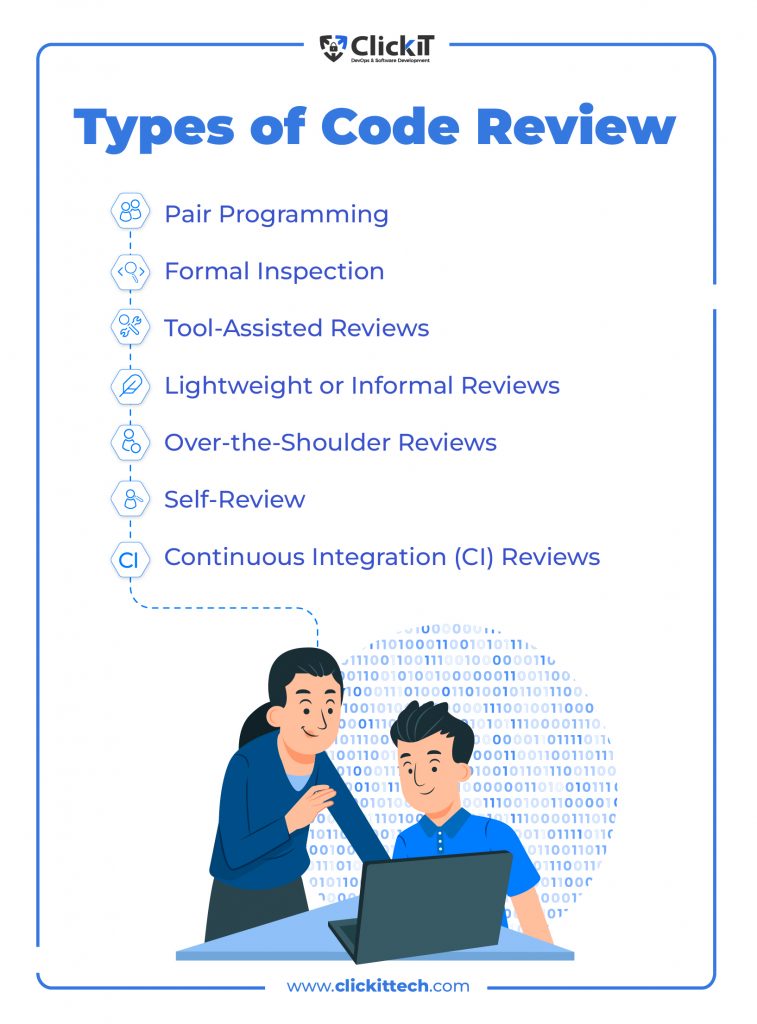
Pair Programming
Two heads are better than one, right? When two developers work together, one actively writes the code while the other keeps an eye on it. This process is known as pair programming. It acts as a built-in code critic, spotting errors as they happen and encouraging knowledge exchange.
Formal Inspection
Formal inspections entail a planned, structured meeting when a group of developers looks at the code together. This approach guarantees thoroughness, conformity to standards, and the identification of both high-level and low-level concerns while being guided by checklists and guidelines.
Tool-Assisted Reviews
The use of specialist software is included in tool-assisted reviews. These programs run an automatic analysis of the code, pointing out potential errors, coding convention violations, and other problems. They serve as useful aids, enhancing the review procedure and enhancing effectiveness.
Lightweight or Informal Reviews
Compared to formal inspections, these are more flexible and less organized. They are often carried out as part of the standard development process, where team members occasionally check one other’s code. Pull requests, walkthroughs, and reading sessions can all be used to conduct these reviews.
Over-the-Shoulder Reviews
Imagine a group of programmers huddling around a screen, looking over each other’s shoulders to examine the code. It’s a relaxed and engaging method that works well for identifying problems right away, exchanging ideas, and promoting teamwork.
Self-Review
Developers use this method to check their own code before submitting it for official review. Developers can find straightforward problems, make sure that coding standards are followed, and make the appropriate modifications by independently evaluating their code. Before involving other team members in the review process, self-evaluation might be a first step.
Continuous Integration (CI) Reviews
Reviews are integrated into the automated build and test process in a continuous integration environment. The CI system initiates builds and tests whenever a developer contributes code changes to the repository. The updated code is examined for compatibility with the existing codebase, test failures, and integration concerns.
Read our blog CI/CD Tools to Accelerate Software Delivery
What are the Best Practices for Code Review?
The following are the top 10 code review best practices we have gathered for your code review checklist.
- Create a Code Review Checklist
- Establish Clear Objectives
- Addressing Feedback
- Maximize automation opportunities
- Use Code Review Tools
- Emphasize Testability
- Document Decisions
- Adherence to coding standards
- Encourage Self-Review
- Foster Collaboration

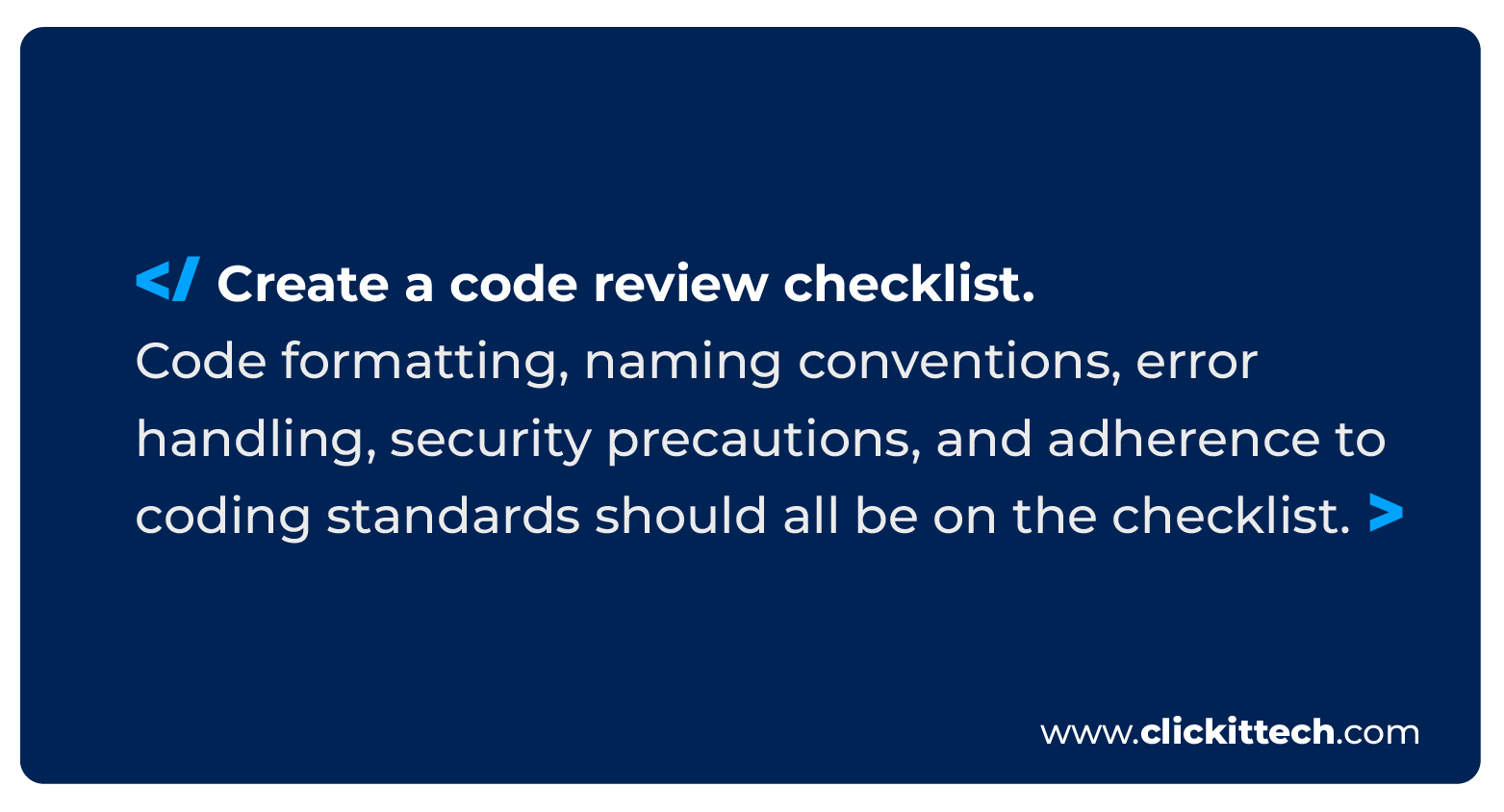
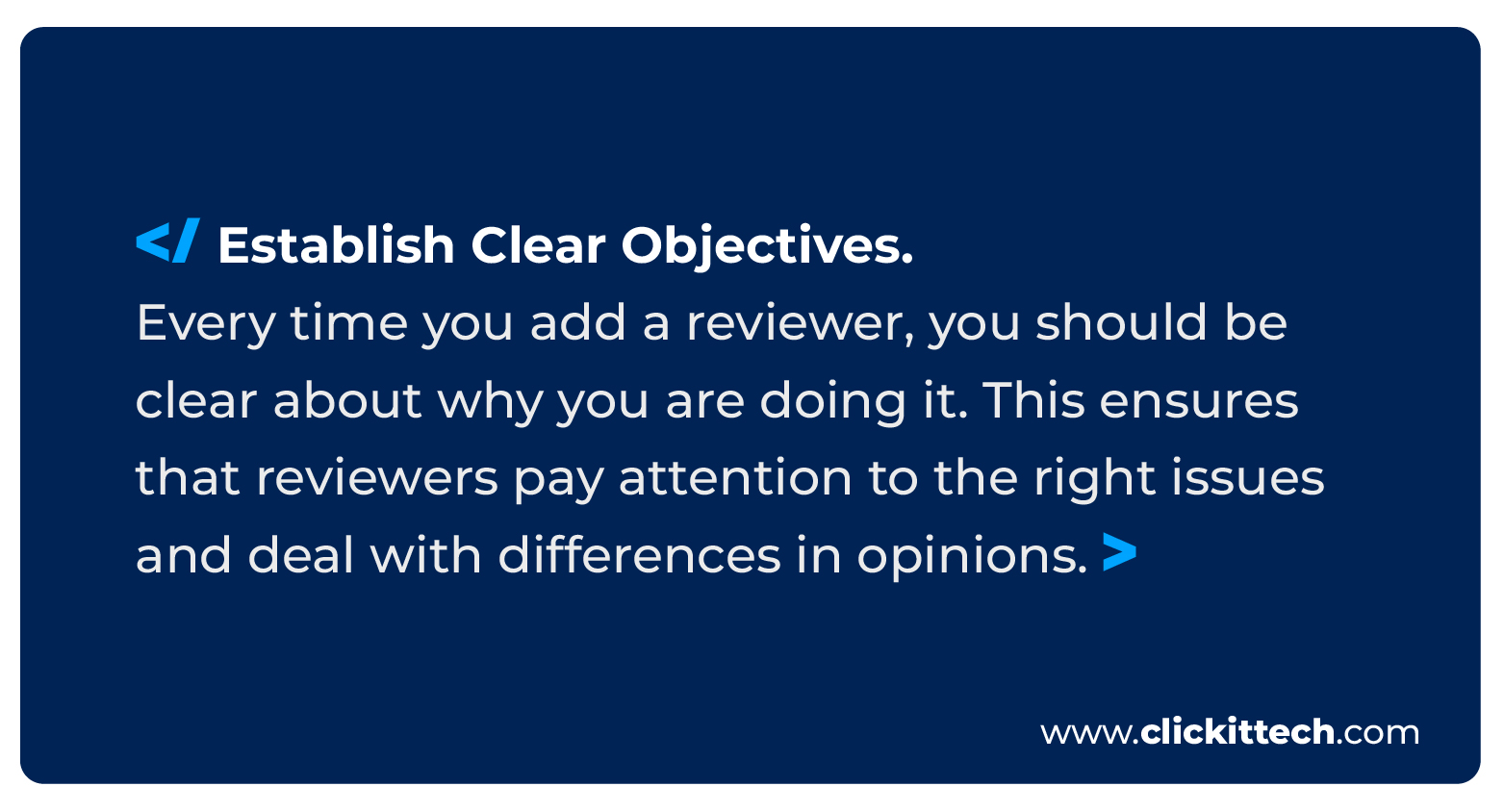
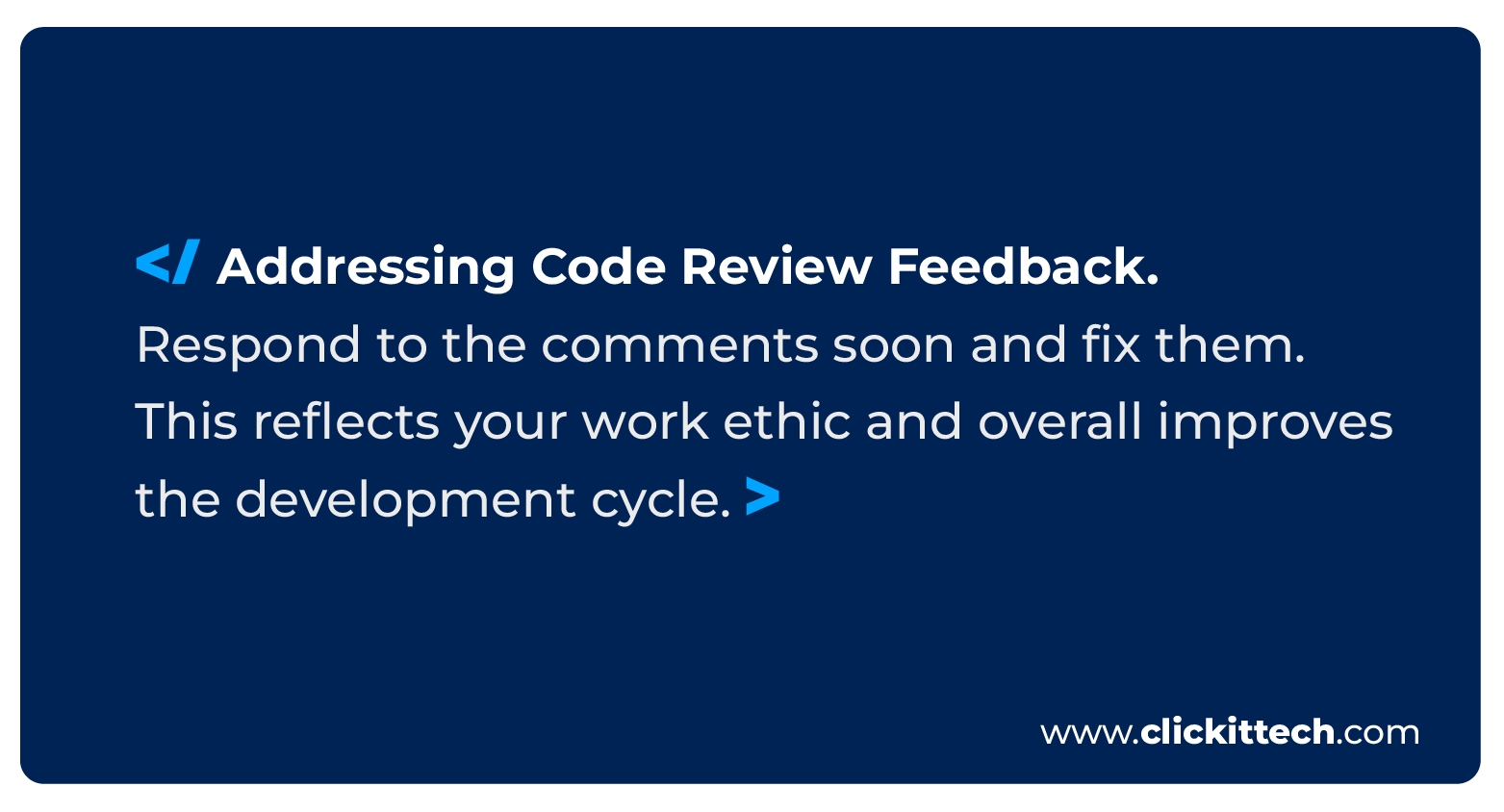
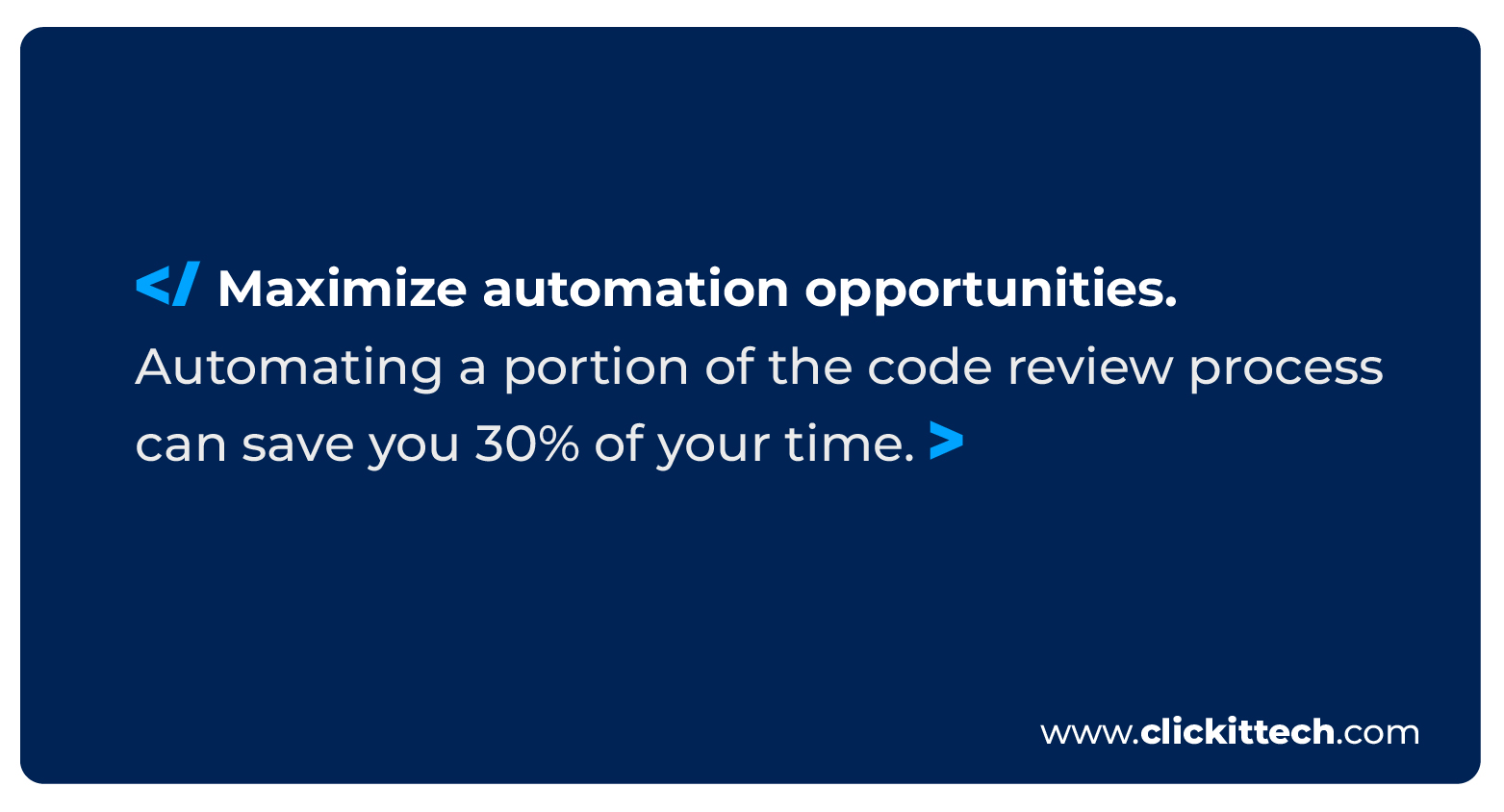
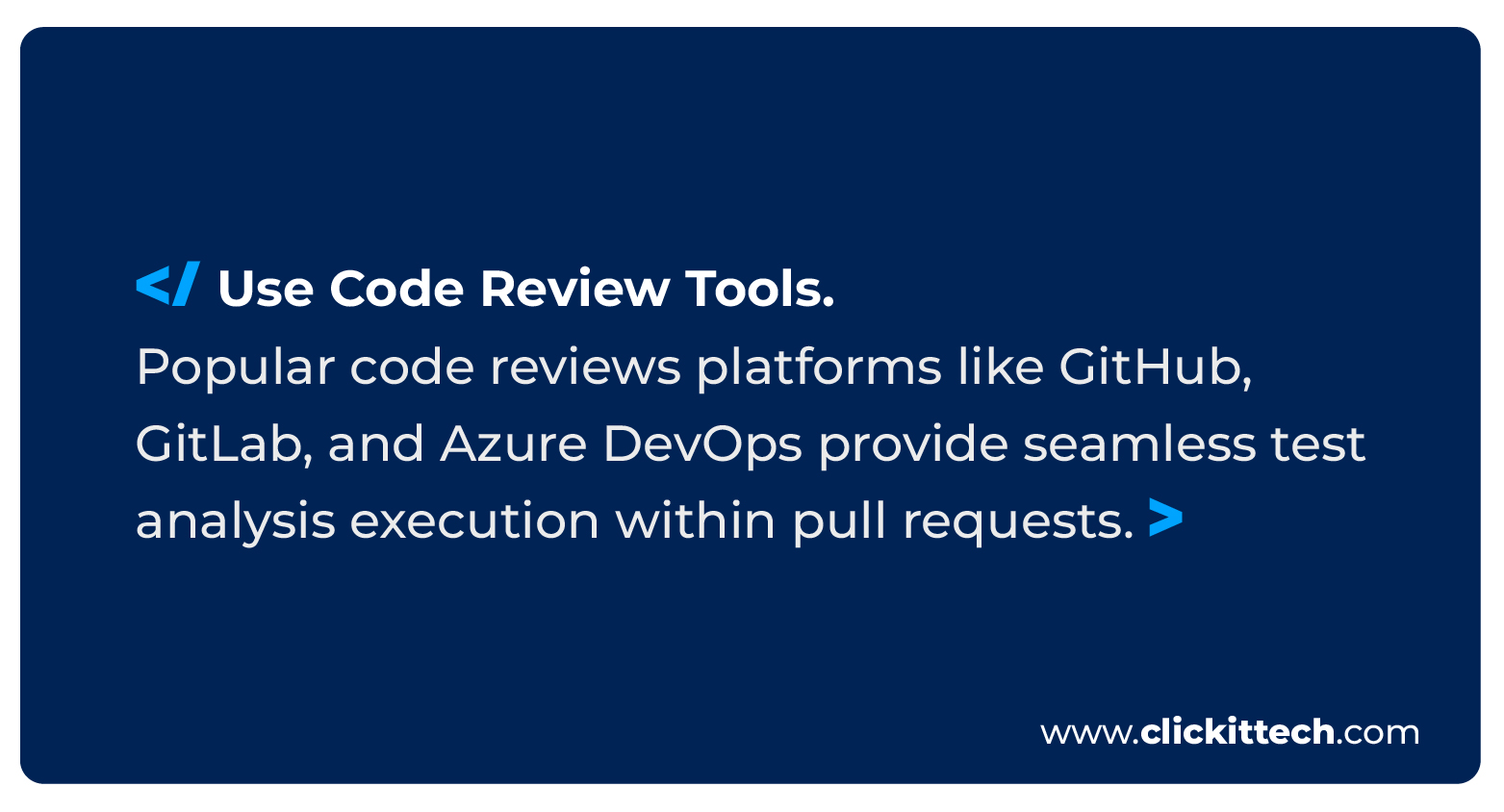

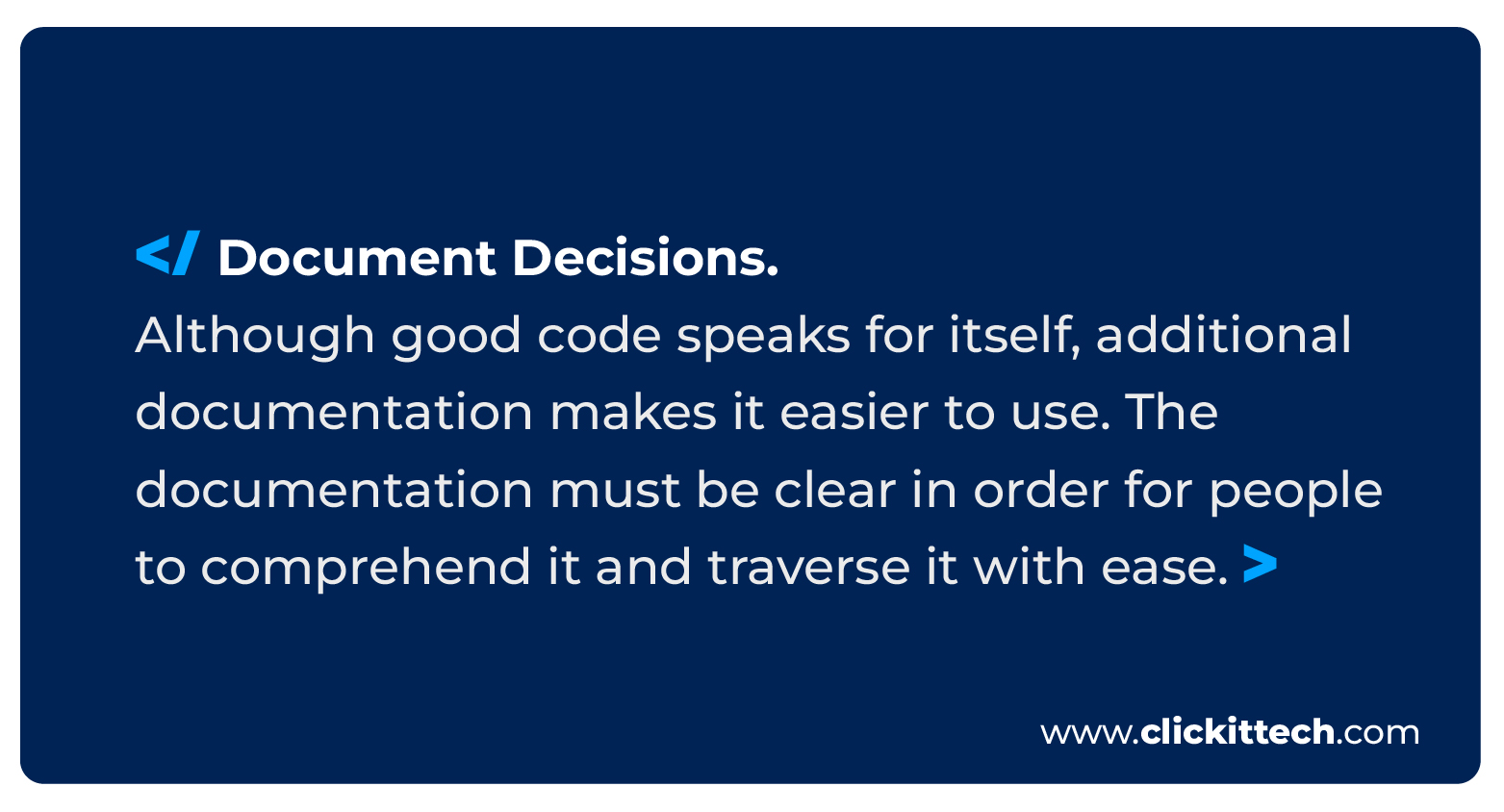
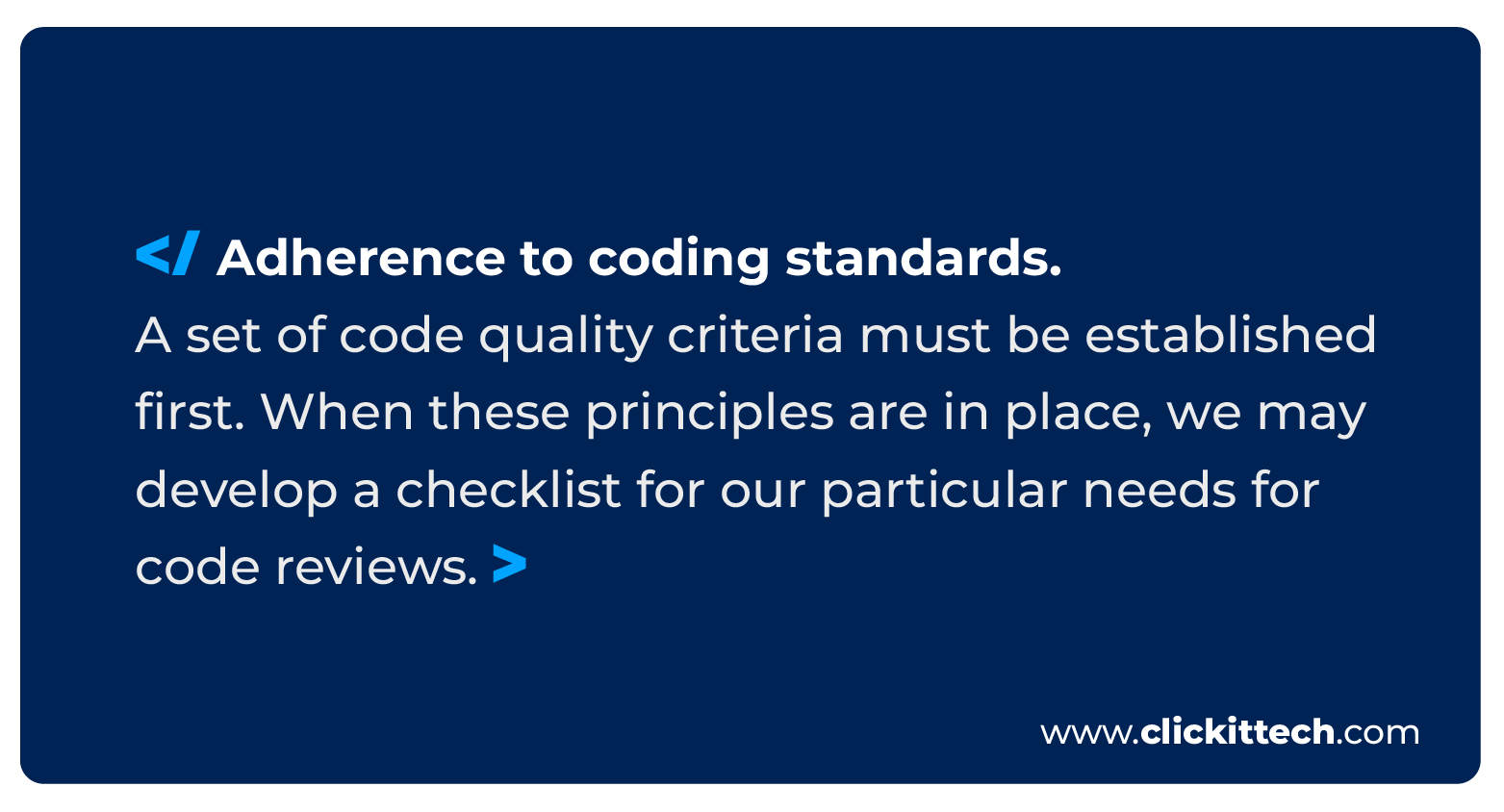
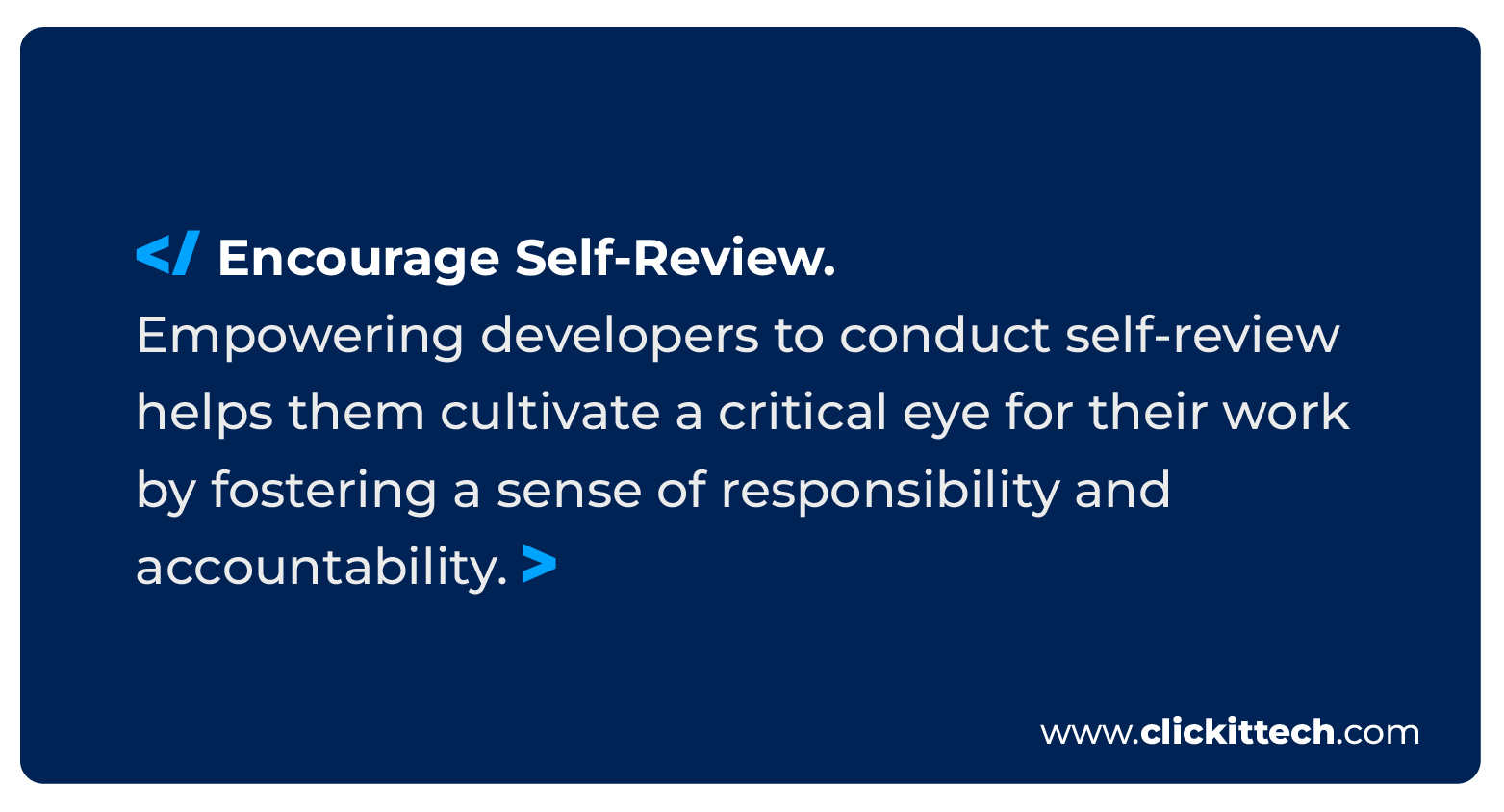
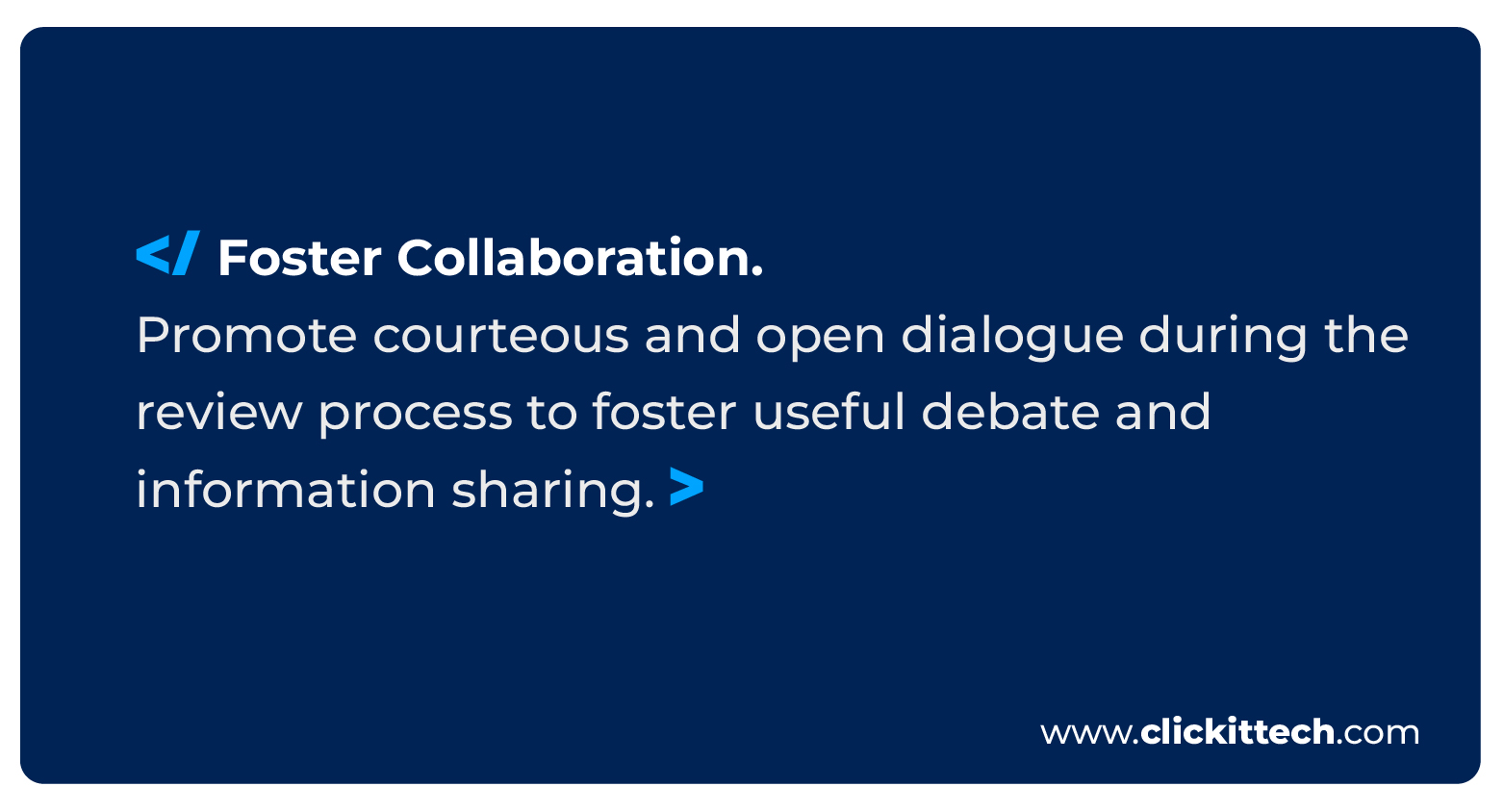
1. Create a code review checklist
The first one is that creating a code review checklist with Code formatting, naming conventions, error handling, security precautions, and adherence to coding standards should all be on the checklist. It is a helpful manual that encourages thoroughness and guards against important details being missed.
Download a pre-made list and edit it to meet your team’s procedures and your needs rather than creating one from scratch. A code review checklist that is specific to your technological stack should be sought after. Checklists can also be used to concentrate on particular elements, such as security or accessibility.
Here’s a short and general checklist you can use as a reference:
- Code Functionality:
- Does the code fulfill the requirements outlined in the user story?
- Are there any logical errors or unexpected behaviors?
- Code Readability:
- Is the code well-structured and organized?
- Are meaningful names used for variables, functions, classes, etc.?
- Is the code properly commented to explain complex logic or intent?
- Is the code consistent in style with existing codebase and coding standards?
- Code Efficiency:
- Are there any performance bottlenecks or inefficiencies?
- Are appropriate data structures and algorithms used?
- Is memory usage optimized?
- Error Handling and Robustness:
- Are errors handled with appropriate error messages and logging?
- Are exception-handling mechanisms in place where necessary?
- Are input validations thorough to prevent unexpected behavior?
- Security:
- Are there any security vulnerabilities?
- Are sensitive data handled securely?
- Is user input properly sanitized and validated?
- Testing:
- Are unit tests provided for critical components?
- Do the tests cover a significant portion of the codebase?
- Are there any test cases for boundary conditions and edge cases?
- Documentation:
- Is there sufficient documentation for usage, configuration, and maintenance?
- Are API endpoints documented?
- Is there documentation for any external dependencies or libraries used?
- Version Control and Collaboration:
- Is the code properly versioned and documented in the version control system?
- Are commits atomic and logically grouped?
- Are pull requests descriptive and linked to relevant issues or tasks?
- Performance Monitoring:
- Are performance metrics monitored and logged for critical components?
- Are there provisions for scaling and optimization as the codebase grows?
- Code Review Feedback:
- Provide clear, specific, and actionable feedback on areas of improvement.
- Acknowledge strengths and positive aspects of the code.
Now that you have your code review checklist, you can continue with the following practices.
2. Establish Clear Objectives
Everyone who is added to the process should understand the standards you have for them. Should they be seeking for flaws?
Did you include them so they could become familiar with the code base? Or, did you add a developer from a different team that uses the codebase’s features?
Every time you add a reviewer, you should be clear about why you are doing it. This ideal method for reviews ensures that reviewers pay attention to the right issues and deal with differences in opinions.
3. Addressing Feedback
As a developer, when you are addressing the review’s feedback, you must maintain certain principles for yourself, such as responding to the comments soon and fixing them. This reflects your work ethic and overall improves the development cycle. There could also be instances where you can add a comment explaining the reason if you reject or disagree with any received comment; otherwise.
To make sure the addressed reviews do, in fact work, run the automated test suites locally before pushing the new changes. This way, you can compare and attach references to test results against the new fixes.
Most importantly, and one that a lot of developers often miss, is adding a proper description and commit message to the PR they will send to address the review feedback. This allows a great deal of time taken off the reviewer’s shoulders without having to refer to you back and forth.
4. Maximize automation opportunities
Automating a portion of the process can be saving you a whopping 30% of your valuable time. To assist the code better, use style checkers, grammar checkers, and other automated techniques like static analysis tools. By doing this, you can ensure that code reviewers can focus entirely on providing insightful input and won’t waste their time commenting on problems they could identify automatically.
5. Use Code Review Tools
Popular platforms like GitHub, GitLab, and Azure DevOps provide seamless test analysis execution within pull requests. In the event that unit tests, integration tests, e2e tests, or test coverage fall short of expectations, you can stop code merging by specifying a policy.
Use potent tools like formatters like Prettier and Black to enforce uniform code styles. They guarantee that your code keeps a consistent look and feel and improves readability without compromising functionality.
Additionally, linting tools like ESLint and Pylint perform static analysis to identify code patterns that could result in mistakes. Use tools like SonarQube for thorough code analysis, measuring, and providing insights about code quality and code coverage.
They offer insightful metrics, point out problems and bad code, and reveal potential weaknesses that can be hiding in your software. Utilize these tools to boost and improve your source code.
Read our blog, Software Engineering Principles.
6. Emphasize Testability
Add running tests for your code change to your code review checklist when you can. Testing is a best engineering practice as well as a best practice. Testing your code before asking for feedback ensures that it truly functions.
Additionally, it demonstrates your appreciation for the code reviewers’ time. Sending out code that obviously (as the tests demonstrate) does not work as planned is not only embarrassing but also makes everyone less productive.
Additionally, remember to create new tests or update old ones to cover the modified or added functionality adequately.
7. Document Decisions
Although good code speaks for itself, additional documentation makes it easier to use. Consider the following to guarantee high-quality documentation.
- Does the documentation make the purpose of the code clear? Users should have little trouble understanding its functionality and desired results.
- Does the documentation provide users with clear instructions on how to utilize the code? It ought to act as a user manual that makes use simple.
- Do updates to the code or new features require further documentation? To keep people informed, make sure to record any updates adequately.
- Is the documentation clear, well-written, and coherent? The documentation must be clear in order for people to comprehend it and traverse it with ease.
8. Adherence to coding standards
The code review process is essential for maintaining high standards for quality. But if that criterion isn’t explicit, how can we meet it? As our guiding principles, we must establish a set of code quality criteria first. When these principles are in place, we may develop a checklist for our particular needs for the task.
For example, ask yourself, does the code follow the recommended procedures for the programming language in question, or do all developers adhere to security best practices like those in the OWASP Top 10?
9. Encourage Self-Review
Empowering developers to conduct self-reviews is a valuable best practice. People can find and fix basic problems, make their code more clear, and increase their understanding of the implementation by studying their own code before asking for feedback from others.
Self-review helps developers cultivate a critical eye for their work by fostering a sense of responsibility and accountability. Additionally, it lessens the workload for reviewers so they may concentrate on more in-depth details.
10. Foster Collaboration
Collaboration is the lifeblood of code reviews, and maintaining a collaborative environment is important for successful reviews. During the code review process, promote courteous and open dialogue to foster useful debate and information sharing. Create a space where developers and reviewers are free to discuss ideas, ask questions, and make suggestions. Insist on the value of group cooperation and shared ownership of the codebase.
Collaboration in the code review process not only improves code quality but also builds teamwork, strengthens team skills, and encourages the development team to keep learning and getting better that why it is a code review best practice.
Code Review Checklist Conclusion
For development teams to maintain high-quality code and promote continuous progress, code review is an important discipline. Teams may improve the efficacy and efficiency of their review by putting this code review checklist into practice.
ClickIT is an IT services and software development company. We recognize the value of having a clear software development process, providing a comprehensive range of software development services to assist you, boost productivity, and turn around products more quickly.
Our team can assist you with anything, from gathering specifications through testing and implementation, with the expertise of our staff. We can help you implement a process for your software that meets your specific needs and requirements.

Code Review Checklist FAQs
A code review is a process where a developer or team of developers inspect another developer’s work.
Code reviews can help to raise the quality of the code, identify and correct problems, and enhance readability and maintainability.
The assignment of reviewers who lack the necessary qualifications and experience is one common error to avoid when conducting reviews.
Reading books and articles about code reviews is one way to develop your abilities and master coding best practices and making a code review checklist
A good code review process involves a thorough examination of the code for correctness, clarity, and adherence to best practices.
-Constructive feedback
-Clear explanations,
-A respectful tone contributes to effective communication.
A reviewer should focus on the code’s functionality, maintainability, and alignment with project goals.









